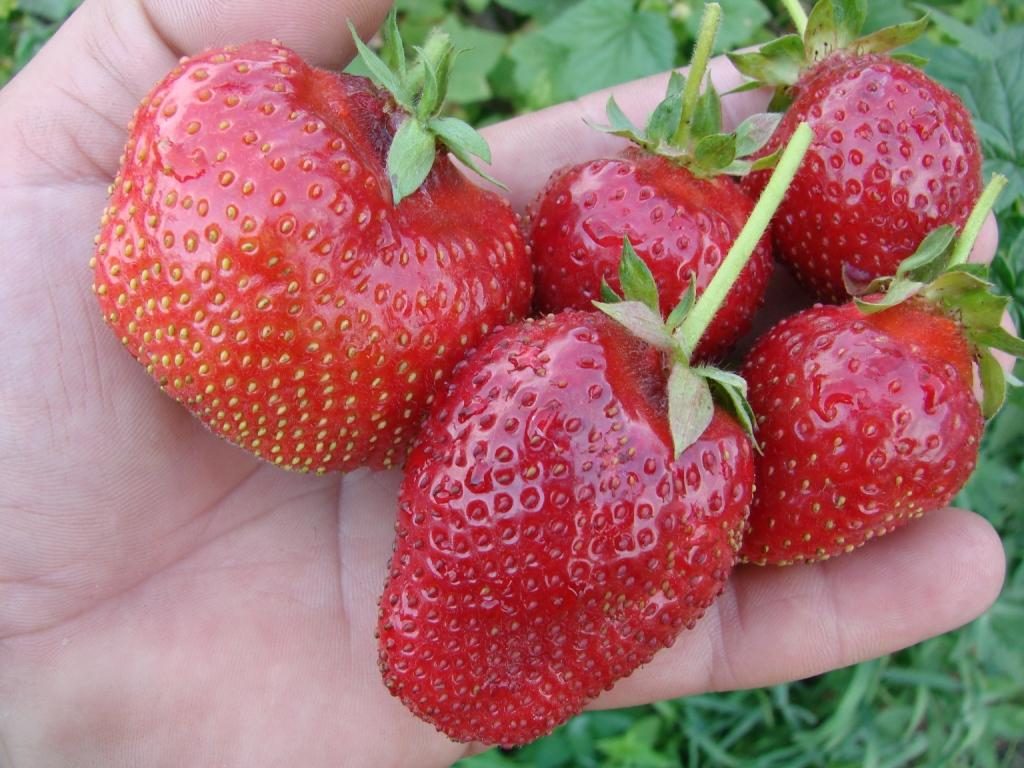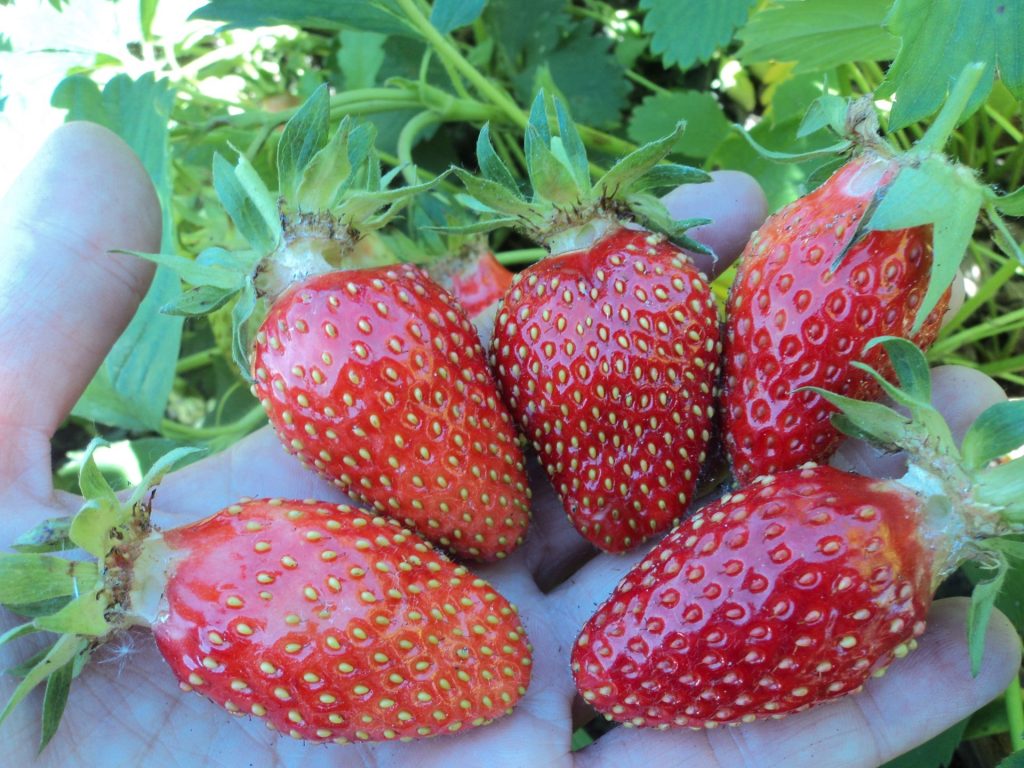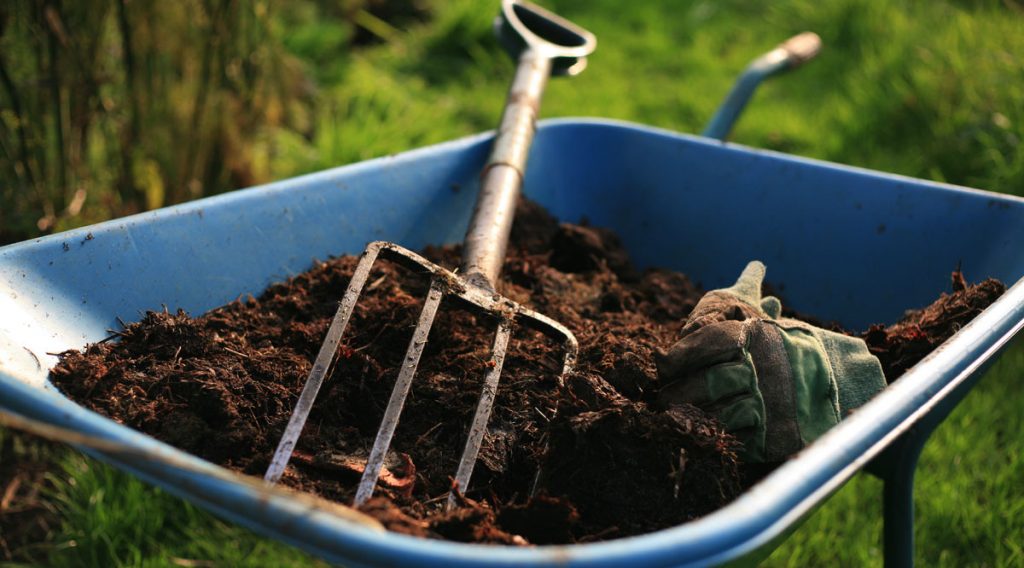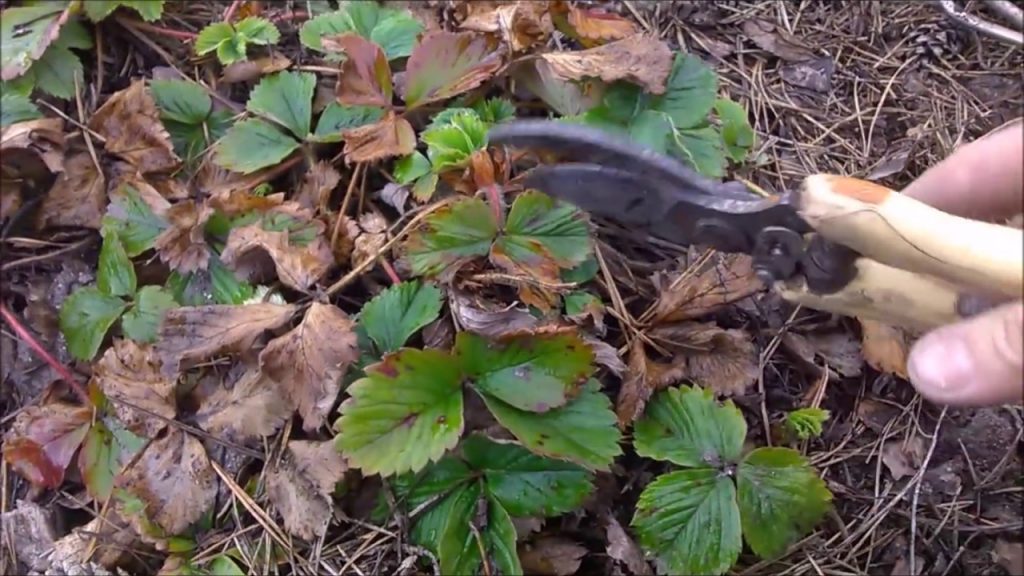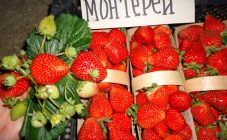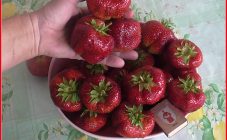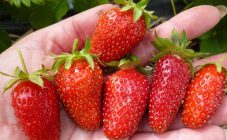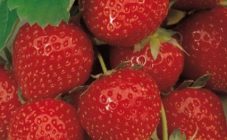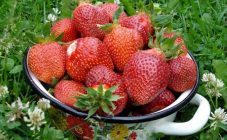Content:
There are many varieties and varieties of berry crops. One of the most successful products of modern breeding is the Maryshka strawberry, created by Czech scientists. Russian gardeners call this variety among themselves ironically Monkey. Another popular name for this strawberry is Maryushka, aka Marishka strawberry.
Strawberry Maryshka: characteristics and description of the variety
Maryshka is a strawberry variety that differs in:
- large fruit size;
- attractive appearance;
- good taste.
The variety is classified as mid-early, the harvest ripens together. For 10-14 days, all the bushes have time to bear fruit. Gardeners like the variety for its unpretentious care and resistance to infections, and consumers like its tender and sweet pulp. Juicy berries are suitable for:
- fresh consumption;
- making juices and jams;
- cooking applications.
The fruits of strawberry Maryshka are very large in size. With good care, one berry can be up to 5 cm in diameter. The inflorescences of an elite strawberry variety Marishka are formed in bunches. Bunches of strawberries are convenient for harvesting.
The garden plant Maryshka is characterized by the following features:
- low compact bushes;
- berries rise on foliage;
- there are few leaves on the bushes;
- the color of ripe berries is crimson;
- the seeds are light yellow, most of them are located at the tip of the fruit.
This variety does not tolerate cold well, so the strawberry garden must be covered for the winter.
It is profitable to grow Maryshka strawberries because it has:
- stable immunity to common infectious diseases of garden plants;
- high productivity;
- large fruit sizes;
- good berry taste;
- suitable for conservation.
The berries ripen together, almost all at once. The crop does not need to be harvested daily. This feature of the variety is beneficial for summer residents, who may occasionally appear on their personal plot.
The fruits can be transported long distances.
The shape of the fruit in one bunch can be different, as well as their size. On average, the bottom of the berry weighs from 40 to 50 g.
A strong root system allows the plant to withstand dry periods. With good feeding, Maryshka's foliage does not fade even in intense heat. Inflorescences are compactly arranged in clusters. Ripening fruits rise above the leaves. The berries hang on the stalks without touching the soil. Thanks to this feature, the berries do not rot and have an attractive appearance. Harvesting is easy, since each ripe fruit is clearly visible, you do not need to look for berries by picking up each strawberry leaf.
The variety is able to form daughter rosettes and mustaches, so strawberries can be propagated on the site independently. At the same time, the formation of antennae in Maryshka cannot be called excessive, a gardener cultivating such a garden plant does not have to waste time removing unnecessary processes.
In the middle lane, this variety ripens from 15 to 30 June. In the southern regions, flowering, ovary formation and maturation begins earlier. In the climatic conditions of Krasnodar and Stavropol Territories, this garden plant acquires signs of an early culture.
One bush of Maryshka is capable of producing up to 500 g of harvest, 2.5 kg of berries can be harvested from one square meter of usable area. Strawberries only bear fruit with good care.
Growing varieties Maryshka
The Maryshka variety needs a suitable place for good growth. This strawberry does not tolerate shaded areas, the garden in which it will grow should be well lit. Deprived of sunlight and warmth, Maryshka loses her juiciness and sugariness.
Some garden crops can infect or inhibit the growth of varietal strawberries, they should not be planted next to berry bushes. Bad neighbors for strawberries are:
- Bulgarian and hot peppers;
- tomatoes;
- blue;
- potatoes.
Solanaceae often suffer from verticilliosis and spread the infection to neighboring crops.
Maryshka does not tolerate too wet soils. With a close location of groundwater and in swampy areas, drainage ditches must be built. The root system at high soil moisture begins to rot.
Strawberries and strawberries do not grow well on acidic soils; for these berry crops, the maximum mark on the soil acidity scale is 5.5-6 pH.
To get a good harvest, strawberry bushes need to be fed. Fertilizers are applied to the soil immediately before planting seedlings, and then, as needed, once every 10-14 days. After harvesting, the bushes are fed again. The last top dressing is applied to the soil in the fall, the nutrients added to the soil should help the plants survive the winter.
Seedling material in regions with short summers is grown in a greenhouse. New seedlings are planted on the beds after 20-30 cm. Compact bushes with a high arrangement of inflorescences are convenient to grow on a black mulching film. This method eliminates unnecessary weeding. For the southern regions, black films are replaced with double-sided black and white.
In arid regions, it is convenient to grow berry crops by planting them in two rows on the sides of a shallow groove. After the bushes are taken, they can be watered using the trench filling method.
The aisles are mulched with cut grasses or weeds. Weed plants are suitable for composting and herbal nutritional infusion for watering strawberry beds.
Prepare the tool like this:
- the barrel is half filled with mowed grass (nettle, quinoa will do);
- the raw materials are poured with water and left to infuse for several days;
- the resulting product is diluted in a ratio of 2 to 8 and watered with cultivated plants at the root.
Diseases and prevention
Even with proper care, strawberry bushes can still develop infectious diseases. If you leave diseased plants in the garden, soon all the bushes will be infected.
Most strawberry varieties are prone to gray mold disease. Strawberry Maryshka has a stable immunity to it, but red root rot is especially dangerous for this berry. This disease occurs in plants growing in a shaded corner of the garden in a poorly ventilated and constantly wet bed. The roots affected by the infection do not allow the entire plant to develop.
In diseased bushes, the leaves wither and turn yellow. The root system becomes dark brown. A diseased plant must be removed from the roots and burned. The place where it grew is treated with a slightly pink solution of manganese.
To prevent infectious diseases, the beds are watered with infusion of garlic and onion peels. This tool is completely harmless to horticultural crops, at the same time acts as an antiseptic and top dressing.
Harmful insects not only eat the leaves and fruits of plants, but can also act as carriers of a viral infection. It is impossible to independently find out which type of virus infected the plant. When diseased bushes appear on the beds, measures must be taken to destroy pests. Sick strawberry bushes must be removed from the garden.
Advantages and disadvantages of the variety
Judging by the gardeners' reviews, Maryshka's strawberry has many positive qualities, such as:
- characteristic strawberry fruit smell;
- delicate sweet taste in berries;
- large fruit size;
- beam structure of inflorescences;
- high arrangement of fruits in relation to the leaves;
- immunity to infections;
- suitability for long distance transportation.
Strawberry Maryushka has very few disadvantages:
- the variety is not immune to red root rot;
- strawberry bushes do not tolerate frosty winters.
Some gardeners consider the simultaneous ripening of the berry crop to be among the disadvantages. Indeed, Maryshka will not be able to feast on strawberries for a long time, the entire crop has time to ripen in less than two weeks. In order to extend the opportunity to harvest delicious strawberry fruits, you need to plant several varieties with different harvest periods.
